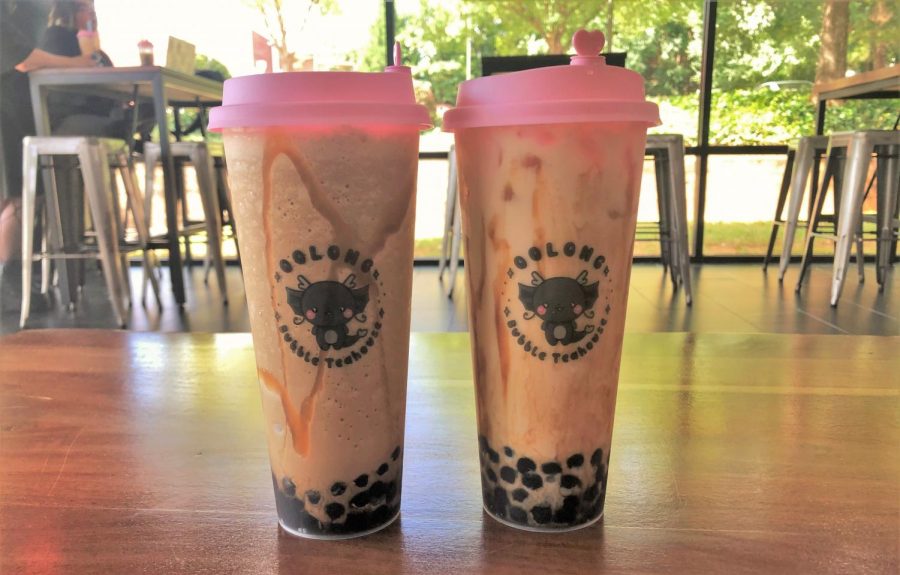The rise of the boba generation
One of the most popular destinations in Kennesaw Georgia, Oolong Bubble Teahouse, sells a variety of teas. The cafe, owned by women of color, provides both fresh and milk-based teas with numerous toppings. Every customer leaves the anime-themed teahouse with a satisfied smile and newfound desire for the sweet drink.
September 15, 2021
Boba tea, in its most traditional sense, consists of black tea, milk, ice, and of course, tapioca pearls, which lay at the bottom of the cup and give the drink its signature look. Tapioca pearls consist of tiny balls crafted from starch that creates a chewy, sticky texture. In more recent years, the tea took on different flavors and colors. Popping boba and fruity fresh teas flooded the industry, transforming it into a modern sensation that youth all around the world can enjoy.
A significant increase in the beverage industry’s popularity encouraged new drinks to become a part of mainstream pop culture. Whereas a couple of years ago, Starbucks and Dunkin Donuts dominated the industry, boba tea now stands as a prominent option for consumers.
“I have not tried boba until recently, but it has quickly become one of my favorite drinks. Most of the cafes have such a relaxing atmosphere it makes for a great place to study,” magnet senior Miriam Hein said.
While the origins of this sweet drink remain uncertain, a considerable amount of people agree that Liu Han-Chien played a significant role in the creation of boba tea. However, milk tea dates back numerous years with cultures all around the world drinking it in their pastime. The chewy tapioca pearls that now adorn the drink come from a plant native to Brazil, the cassava. Citizens in Taiwan commonly consumed both tea and tapioca for years and at one point the two combined to form a new drink.
Chun Shui Tang teahouse in Taichung, Taiwan, the supposed source of all bubble tea, coined this drink in the 1980s. Han-Chien, the owner, came up with the idea to serve tea cold after seeing coffee served cold in Japan. His product development manager, Lin Hsiu Hui, poured a typical Taiwanese dessert called fen yuan, a sweetened tapioca pudding, into her iced tea and instantaneously the drink became a craze.
Now, boba appears on every street in Taiwan. Food trends frequently change, but this refreshment stays stable in society. For numerous Asian Americans, drinking the refreshment allows them to feel more connected with their culture.
“I became a barista/bobarista because I thought the idea of making boba and tea seemed really cool. I feel great joy making people smile when they try the flavorful bubble tea drinks,” 2018 NC graduate David Lee said.
The story of boba tea involves different aspects of different cultures merging to form a new unique treat. From its humble beginnings as a mere one-dollar afterthought to accompany meals in Asian restaurants, boba cafes now rapidly pop up across the country. Similar to coffee, the afternoon pick-me-up refuses to disappear, as does the addiction several young adults developed.
“Personally, I enjoy trying many different places because I love the diversity of drinks. One of my favorites is Tiger Sugar in Kennesaw. My go-to drink on a sunny day would have to be a wintermelon fruit tea. Taking a sip of it gives me a slight burst of energy to get me through the day,” NC junior Ranney Vo said.








Tara Anastasoff • Oct 7, 2021 at 11:48 AM
Yum! Boba > Coffee, this was a great article!